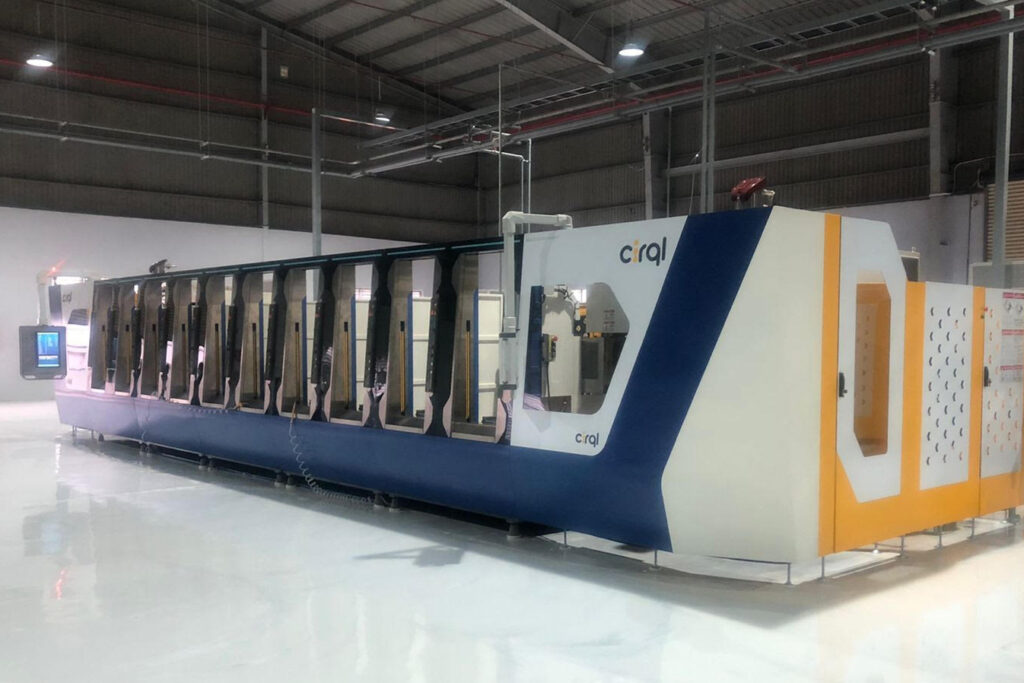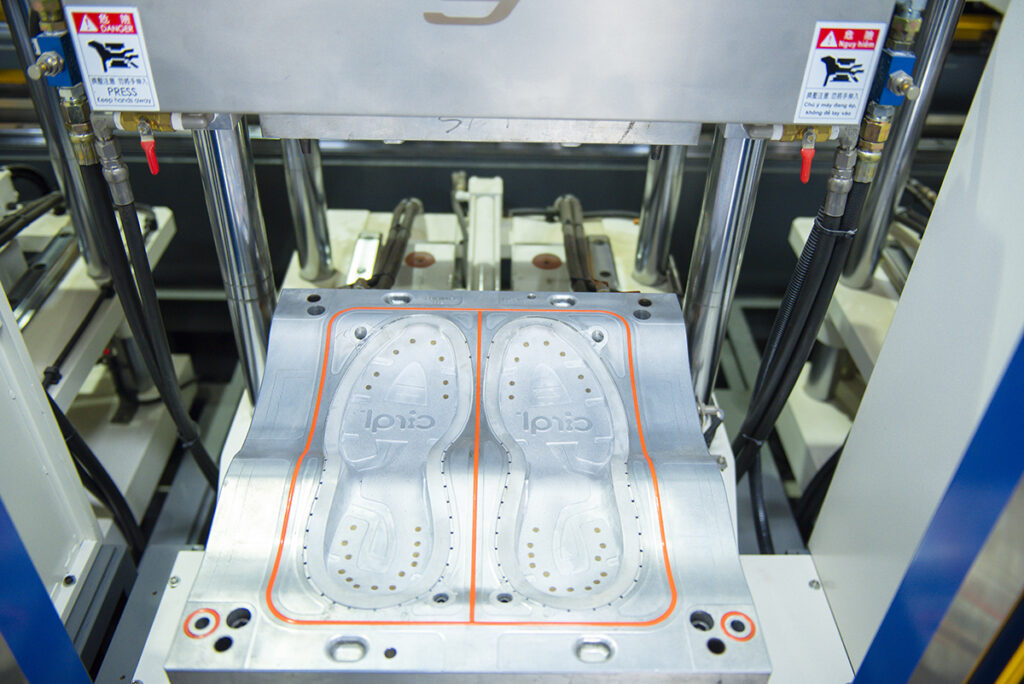All Bioplastics are Not Created Equal: OrthoLite Cirql™ as an End of Life Solution
If it were easy, everyone would be doing it. That, in a nutshell, summarizes the push for less environmentally impactful materials in footwear. At OrthoLite and OrthoLite Cirql™, we commend our industry peers in the continued commitment and work we’re all embracing to build less-impactful shoes.
The goal with OrthoLite Cirql is visionary: a footwear foam with a circular, end-of-life solution.
To move toward that goal, we needed to source a polymer with the right chemical structure, the right performance qualities, and the capacity to scale from responsibly-sourced with a percentage of renewable materials.
In this post, we attempt to simplify the complex world of biopolymers and why they matter if we’re really going to effect change as an industry.
Short on time? Here’s the summary. We partnered with a like-minded company to source the biopolymer for OrthoLite Cirql. After foaming with the chemical-free foaming process that OrthoLite pioneered, the result is a scalable, footwear foam with not one, but two, circular end of life solutions. OrthoLite Cirql foam is both chemically recyclable and 100% compostable in industrial facilities. Read on for the details.
Footwear Polymers and Foam 101
It all begins with a polymer. To say that not all polymers are created equally is an understatement that undermines the serious environmental impacts some foams can inflict.
In the world of comfort and athletic footwear, traditional plastics-based foam is a “go-to.” Most of that foam does not have an end-of-life solution built in due to the source polymers and/or foaming processes.
For OrthoLite Cirql, we sought a bio-based polymer that could fully biodegrade.
What is a Biopolymer?
For those of us who did not commit high school chemistry to long-term memory, let’s tackle polymer first. A polymer is any repeating chain of smaller chemical units, known as monomers. Monomers are atoms or molecules that have the capacity to bond together.
Polymers can be human-made or naturally occurring. In the human-made category, for example, all plastics are polymers. Meanwhile, naturally occurring polymers include rubber, silk, wool, cellulose, and proteins from amino acids, among others.
Rounding back to biopolymers is where things get a bit confusing.
By technical definition, biopolymers are polymers produced by living organisms (i.e. plants and animals). They are naturally occurring.
In the realm of plastics, which are always human-made, the preferred nomenclature is bio-based polymer. Bio-based polymers are plastics composed of, at least in part, a percentage of renewable materials, often sugarcane, corn and other plant stocks.
While those definitions are fairly universal, the nomenclature is not. Biopolymer, bio-based polymer, bioplastic, and bio-based plastic are often used interchangeably.
Further complicating the issue is biodegradability. A plastic’s capacity to biodegrade is not based exclusively on the source material, but rather on the chemical structure of that plastic.
For that reason, some petroleum-based, non-renewable plastics are fully biodegradable, while a 100% bio-based plastic with a different chemical structure may not be.
Certainly, source materials matter toward evolving a less impactful footwear industry. Between source and structure (hence end-of-life options), however, it’s confusing for consumers, let alone manufacturers and brands, to navigate.
This complexity illustrates why a more environmentally sound future for the footwear industry may be: “What is the end-of-life for this product?”

OrthoLite Cirql: A Recyclable and Industrially Compostable Footwear Foam
On the technical side, OrthoLite Cirql is a patented footwear foam made from a proprietary, chemical-free foaming technology that uses a 43% bio-based polymer. That polymer is made from responsibly-sourced, renewable plant material, which is converted into monomers and combined with other biodegradable monomers through the use of proprietary polymerization technologies. The remaining 57% of the polymer is made up of biodegradable and compostable monomers.
What does it mean “in real life”? OrthoLite Cirql is a true soil-to-soil solution that can be composted at industrial facilities into usable, nutrient-rich compost.
OrthoLite Cirql foam has been certified through third-party validation, by Din Certco, as industrially compostable under ASTM D6400 and EN13432.

The Promise and Challenges of Industrial Composting
Composting is the managed biodegradation of organic material. It uses air/oxygen, water, heat, microorganisms, and occasionally pressure to transform the material into a rich compost that’s an ideal growth medium and additive for plants. Though they rely on the same elements, industrial composting and backyard composting are very different in application.
OrthoLite Cirql foam is only certified and suited for industrial composting facilities.
Industrial composting is a more highly calibrated process than we practice in our backyard compost bins. Industrial facilities can exert precise control over the various factors, and achieve higher, sustained temperatures in order to effectively and time sensitively compost materials that home composters cannot.
When properly managed, industrial composting as an end-of-life solution for footwear foam has enormous potential to support the principles of a circular economy…at scale!
Industrial Composting Potential
- OrthoLite Cirql-based footwear will serve a functional, usable lifespan, then be converted into usable, nutrient-rich soil.
This has potential to massively lower waste in landfills from the tens of millions of shoes thrown away each year. - There is a gap we must close in order to fulfill that exciting potential.
Industrial Composting Challenges
- Access: Though over 4,700 industrial composting facilities exist in the U.S. alone, not all are equipped to compost biopolymer-based foams.
- Separation: It will be difficult for consumers to separate OrthoLite Cirql foam from glues and other shoe materials in order to compost.
We acknowledge the real-world challenges to delivering on the massive promise of scaling the industrial composting of footwear foam. It will require a concerted and unified industry effort. And we will be actively committed to being part of the solution.
Solutions
- Increased consumer access to specialized facilities, via national, industry-backed, take-back programs.
Training compost facilities for biopolymer-based foams. - These challenges are not insurmountable, especially if the footwear industry and stakeholders can band together toward solutions. With the potential to be recycled or industrially composted, OrthoLite Cirql foam is firmly on the forefront of a more sustainable, less wasteful, and more regenerative industry.
Read More About OrthoLite Cirql and End of Life Solutions
OrthoLite Cirql™
The Future of Sustainable Footwear is Circular
Why We Need an End-of-Life Solution for Footwear